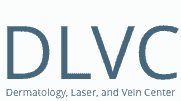IPL
Intense Pulsed Light (IPL) technology uses high-energy pulses of light to provide long-lasting results. IPL skin resurfacing, collagen stimulation, vein therapy and photoepilation improve skin texture and appearance and remove hair from any area of the body without damaging nearby tissue. Hair, veins or pigmented regions on the skin surface selectively absorb the pulses of light, shrinking or fading after treatment; collagen tightens, smoothing the skin.

Patients can return to work and all regular activities immediately after the procedure. Skin appearance should improve soon after treatment. Hair loss is immediate and long-lasting. Several treatments may be desired for optimal results.
IPL Hair Removal
Forget shaving, waxing, tweezing and electrolysis – Intense Pulsed Light (IPL) technology provides long-lasting hair removal on any area of the body. IPL photoepilation uses high-energy pulses of light to remove unwanted hair from the face, back, legs, bikini line and other areas without damaging nearby tissue. The IPL handpiece is moved back and forth across the selected area. Hair beneath the skin surface absorbs the light and heats up, loosening from the follicles and eventually falling out. Patients can return to work and all regular activities immediately after the procedure. Hair begins immediately and is long-lasting, with some permanent thinning. Several treatments may be desired for optimal results.
Photodynamic Therapy
Photodynamic Therapy uses light and a light-sensitive dye to treat a myriad of skin conditions. Amino levulinic acid (ALA) is first applied to the skin. When ALA is then exposed to the appropriate ultraviolet light source, it is activated. PDT ensures high precision by targeting only the tissue in and near the treatment area.
PDT treatments work by ultraviolet light activation of ALA and result in the reduction of all manifestations of sun damage, including blotchy pigmentation, rough spots (actinic keratoses), brown spots (lentigines), as well as reducing redness and eliminating blood vessels.

PDT treatments are an effective treatment for acne and rosacea, as well as for oily skin due to enlarged sebaceous glands.
PDT using ALA and ultraviolet light in the blue range is an FDA approved treatment for precancerous growths commonly called actinic keratoses.
Photodynamic Skin Rejuvenation is a cosmetic procedure that utilizes ALA and an intense pulse light (IPL) source to reduce sun damage, blotchiness, broken capillaries, and rosacea.
Laser Treatment of Facial Spider Veins/ Telangiectasias
At Miracle Mile Medical Center, we treat facial spider veins with the 810 nm laser. The Diode 810nm emits a fine beam of laser light that is used to remove superficial veins on the cheeks, chin and nose. The laser light beam targets the red color of the veins, generally with little effect on the surrounding skin. Easy recovery is typical. Some patients may experience redness after treatment, although this rarely lasts more than a few hours. Typically, multiple treatments are necessary to achieve optimal results. Tiny pink and red vessels usually require two to three treatments to achieve acceptable results.

Veins that are darker or purplish are usually more difficult to remove, and require more treatments. Treatments are spaced at four to six week intervals. Over time, it is possible for new spider veins to develop, but these too can be treated.
Photoaging
"Photoaging" is the term that describes damage to the skin caused by intense and chronic exposure to sunlight. The visible effects of photoaging are fine wrinkles, mottling and pigmentation of the skin, and skin roughness—changes that are usually associated with chronologic aging (calendar years). But, photoaging is not a good indicator of chronologic age; it just makes a person look older than his or her chronologic age. Precancerous and cancerous growths will eventually appear in more advanced cases. The three main approaches to counter photoaging are avoiding the midday sun, using of photoprotective agents—sunscreen and clothing, and utilizing topically applied treatments (such as tretinoin, alpha-hydroxy acids, bleaching creams, and topical antioxidants, especially vitamins C and E). The above treatments are usually most effective when the skin manifestations of aging and photoaging are superficial to moderate.
For more advanced cases, additional interventions may be required such as chemical peeling, intense pulse light (IPL), photodynamic photorejuvenation, laser resurfacing, filler agents, or Botox. After a comprehensive evaluation, Dr. Alaiti will recommend the appropriate creams regimen, and procedures for your skin condition.
Nd:YAG laser treatment of abnormal pigmentation and tattoos
The UltraLight-Q has been suited with an arsenal of light-based wavelengths that are specifically attracted to tattoo ink. In order to clear the ink from the skin, the laser system creates a collimated energy beam of light. The light will pass through the outer skin layers targeting only the embedded ink. Energy from the laser is rapidly absorbed by the ink causing the pigment to fracture into microscopic particles. Over time, the body’s immune system will clean the particles from the skin causing the tattoo to fade and eventually disappear.
How many treatments wlll it take?
Not all body art is created alike; many factors are involved that determine the number of treatments needed, such as: How long the tattoo has been in the skin. Newer tattoos are a little more resistant while older tattoos are easier to remove. The depth of ink in the skin. The type of ink in the skin. There are many different types of pigment that could have been used to create the tattoo. Was the tattoo created by a professional artist or an amateur? Usually professional tattoos will need 6 - 8 treatments, while amateur tattoos take about 4 - 5 treatments. The sessions will be spaced 6 - 8 weeks apart, allowing the body’s immune system to naturally remove the pigment fragments.
What does the treatment feel like?
Most patients report that the treatment sensation for removing a tattoo is similar to getting a tattoo. Other patients say the laser treatment feels like a rubber band snapping against the skin. A numbing cream can be used to make the procedure more comfortable.
Lumenis Fractional CO2 Laser System/ Er:YAG laser resurfacing
As a person ages, their collagen production begins to decline which leads to the breakdown of the skin’s underlying support structure. Daily exposure to UV rays and other environmental elements can cause the skin to become discolored and premature wrinkles may emerge. Treatments with the Lumenis Fractional CO2 laser will enhance the skin’s strength and elasticity. The skin will have a smoother, tighter texture and pigmentation problems will begin to diminish. Lumenis Fractional CO2 laser treatments provide wrinkle reduction, overall tissue tightening and textural improvement. Fractional skin resurfacing is a safe and effective procedure for almost any skin type.
Fractional resurfacing can be applied to most areas of the body. We offer CO2 and Er:YAG Fractionated Laser Resurfacing Consult Dr. Alaiti to see if fractional resurfacing is right for you.
The high speed UltraFine Fractional Scanner will direct a grid pattern of tiny pulses of light at the skin. Each pulse delivers a column of energy that can reach the skin’s dermal layer. This stimulates a natural renewal process of the body’s own collagen. Also, because the laser beam has been fractionated, small untreated areas will remain between the treated spots. By strategically performing the procedure in this way, the healing process is accelerated.
Treatment Outcome Desires
The Matrix Fractional CO2 technology is designed in such a way that the treating physician has precise control over the intensity of the treatment. Each individual treatment can be tailored to a specific need and allotted downtime. Consult Dr. Alaiti to discuss the possible benefits and results associated with the Matrix Fractional CO2 laser system.
How long will my treatment take?
The Matrix Fractional CO2 treatment usually takes less than 30 minutes.
What does the laser treatment feel like?
Treatment sensations vary from person to person. As tiny pulses of energy are delivered into the skin, most patients will experience a warm sharp feeling and an immediate tightening of the skin. Most patients look and feel like they have a mild sunburn for a few days after the treatment. Anesthetic ointments and cooling devices may be used to reduce any discomfort during and after the procedure.
How will I take care of my skin after treatment?
Depending on the desired outcome, post-treatment care will vary from patient to patient. Most patients that have a full facial skin rejuvenation treatment will need to stay indoors for a few days while applying a topical ointment as directed by the physician.
How much does the treatment cost?
Costs will vary depending on your skin condition and overall treatment requirements. Schedule a consultation today for more details.


